The Ugly Duckling 读后感
Andersen‘s the ugly duckling tells us a melancholy but beautiful story, which says that a little duck found himself very ugly and was so depressed, but when he grow up, he turned into a beautiful swan.
This ageless story speaks across generations with its reaffirming message. In this age of instant gratification, Andersen‘s tale reminds readers that some things are worth waiting for and that a pleasure deferred (whether by choice or necessity) is often the sweetest one of all.
Pinkney‘s descriptive passages resonate with the splendor of nature‘s beauty. The glowing watercolors, filled with intricate details, make each blade of grass visible, and the delicately drawn, nearly transparent mosquitoes are as ethereal as they are in life. The subtle details incorporated into the scenes--a frog catching a passing fly at the pond and a tiny mouse perched by a crate in the old woman‘s cottage--make children take another look.
One day he heard a sound of whirring wings, and up in the air he saw a flock of birds flying high. They were as bright as the snow that had fallen during the night, and their long necks were stretched southward. Oh, if only he could go with them! But what sort of companion could he be to those beautiful beings?
‘I am too ugly even for a dog to eat,‘ the duckling thought. Jerry Pinkney‘s poignant text and rich artwork convey the timeless appeal of this tale of hardship and redemption. Anyone who has suffered the sting of ostracism can sympathize with the ugly duckling‘s plight and will relish the uplifting conclusion.
Well, when he found he had become a beautiful swan, the coming flowers and praise didn’t make him proud, just because so much sorrow and pain taught him to cherish and satisfy.
第二篇:The ugly duckling
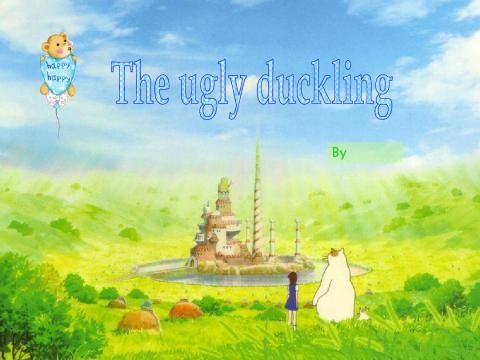
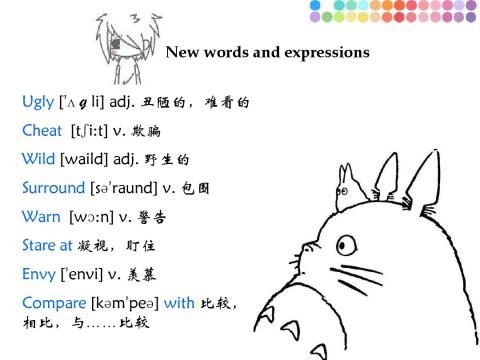
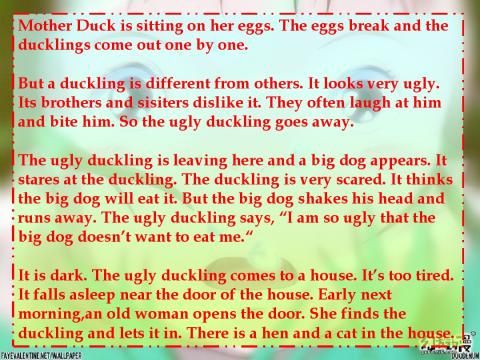
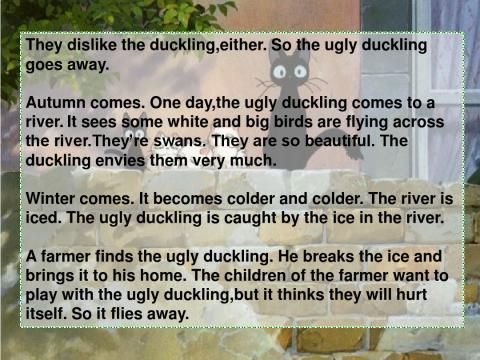

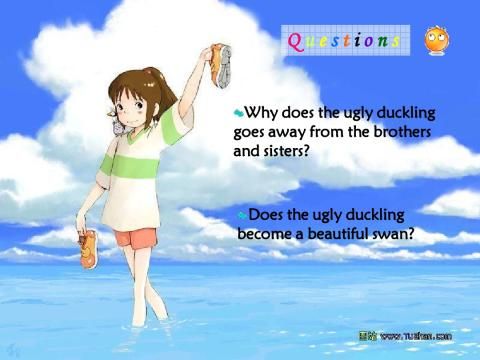
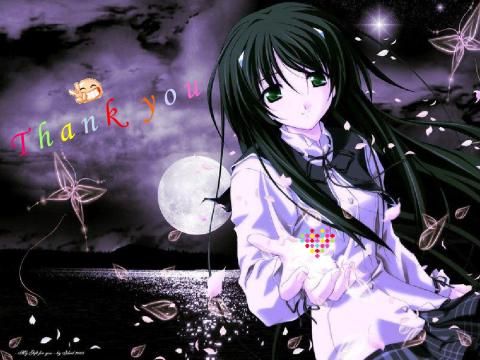
-
五年级一班读书活动总结
读书活动总结五年级一班为落实学期初学校有关工作安排,继续营造读书氛围,鼓励学生以书为友,“爱读书,会读书,读好书”,促使学生养成良…
-
五年级读书活动总结
五年级五班读书活动总结这学期我班开始了“营造书香班级享受快乐阅读”读书活动,开展一学期来,从总体上来说取得了一定的成效,每个孩子从…
-
党组中心组理论学习工作总结
20xx年xxxx局20xx年在区委宣传部的正确领导和统一部署下,xxxx局党组坚持以“三个代表”重要思想和党十七届三中、四中全会…
-
感恩ppt活动总结
宿州学院信息工程学院感恩PPT活动大赛总结书信息工程学院组织部办公室20xx年x月x日信息工程学院感恩PPT活动大赛总结20xx年…
-
20xx年度幼儿园教师个人工作总结
离开了昔日的校园,走进了我热爱的幼教岗位,转眼间已经一年了。我爱幼教这一行,因为这个职业是纯真的、美好的。和孩子们在一起的每一天都…